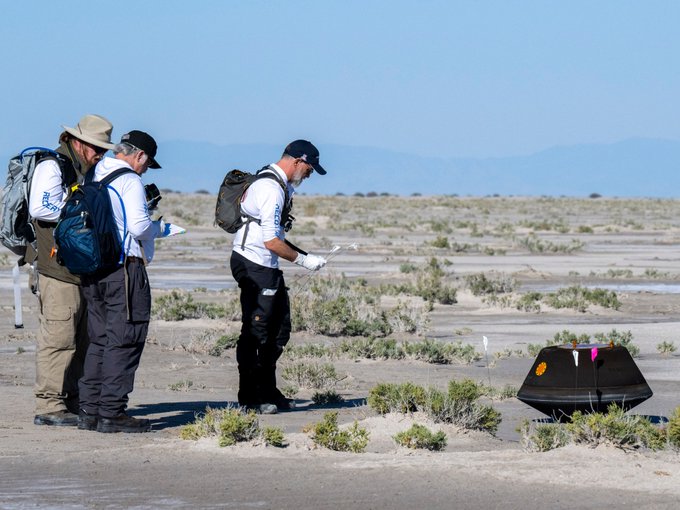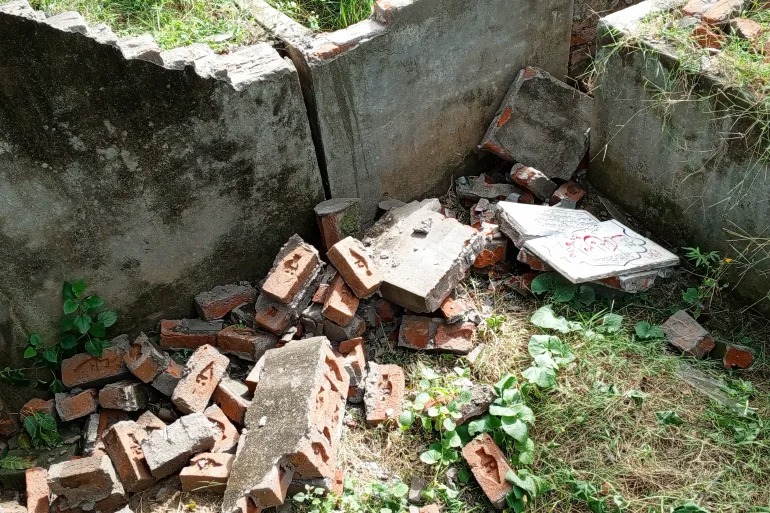NASA’s Osiris-REx space probe has uncovered an enigmatic treasure trove of “asteroid dust and debris.” The eagerly anticipated moment unfolded at the Johnson Space Center in Houston, Texas, as the space agency cautiously unsealed the Osiris-REx science canister, which recently returned to Earth bearing the most substantial asteroid sample ever collected from the cosmos. With bated breath and a tinge of suspense, experts now embark on the meticulous process of deciphering the secrets encapsulated within these cosmic remnants.
Dust and Debris Stirs Excitement
NASA’s long-awaited moment of reckoning arrived on Tuesday as the first glimpse inside the Osiris-REx space probe’s canister revealed more than mere cosmic cargo. As the initial lid was lifted, scientists were met with the unexpected sight of “black dust and debris” on the avionics deck. Although NASA refrained from conclusively linking these materials to the asteroid, the profound gasps of amazement that reverberated through the scientific community spoke volumes about the significance of this discovery.
Clues to a Cosmic Mystery
While the origin of the dark powder and sand-sized particles remains under scrutiny, NASA’s inclination is to attribute them to challenges encountered during the sample collection phase. However, these hurdles were eventually surmounted, enabling the secure transfer of the asteroid sample into the probe’s storage canister. This tantalizing residue, found both on the inside of the lid and base, may hold the key to unlocking profound insights into our cosmic origins.
The Road Ahead: Unraveling the Secrets
With the Osiris-REx lid unsealed within a meticulously controlled environment, NASA’s team is now poised for the intricate disassembly of the probe itself. The focus will shift towards analyzing the bulk of the sample collected from the asteroid—a task that promises to yield groundbreaking revelations. Mark your calendars for October 11 when NASA is set to unveil the secrets held within this cosmic treasure chest during a highly anticipated news conference.
The robotic marvel, OSIRIS-REx, embarked on its mission in 2016, culminating in the retrieval of this specimen from Bennu, a small but captivating carbon-rich asteroid. The triumphant return of the probe marks only the third instance in history that mankind has managed to bring back an asteroid sample, and this one, by far the most substantial. Collecting approximately 250 grams (9 ounces) of dust from Bennu’s rocky surface, scientists are now poised to glean insights into the solar system’s formation and the evolution of Earth’s habitability.
Additionally, this sample promises to enhance our understanding of asteroids that could potentially pose threats to Earth, though the odds of Bennu colliding with our planet remain remote. A quarter of the Bennu sample will be immediately employed in experiments, with a portion sent to mission partners in Japan and Canada. The remainder will be conserved, serving as a repository for the curiosity and inquiries of future generations.
The culmination of the Osiris-REx’s 6.21-billion-kilometer (3.86-billion-mile) journey was nothing short of spectacular. The probe descended through Earth’s atmosphere in a fiery spectacle before gracefully parachuting down into the arid landscapes of western Utah. It’s a momentous occasion that will undoubtedly reshape our understanding of the cosmos and our place within it, leaving us poised for even greater cosmic adventures in the future.
















